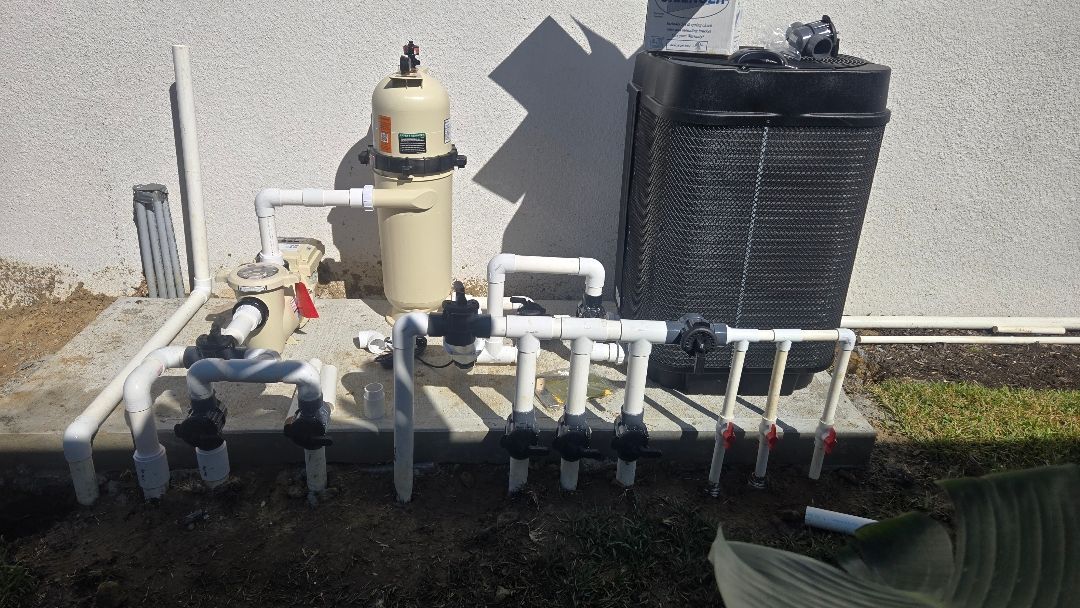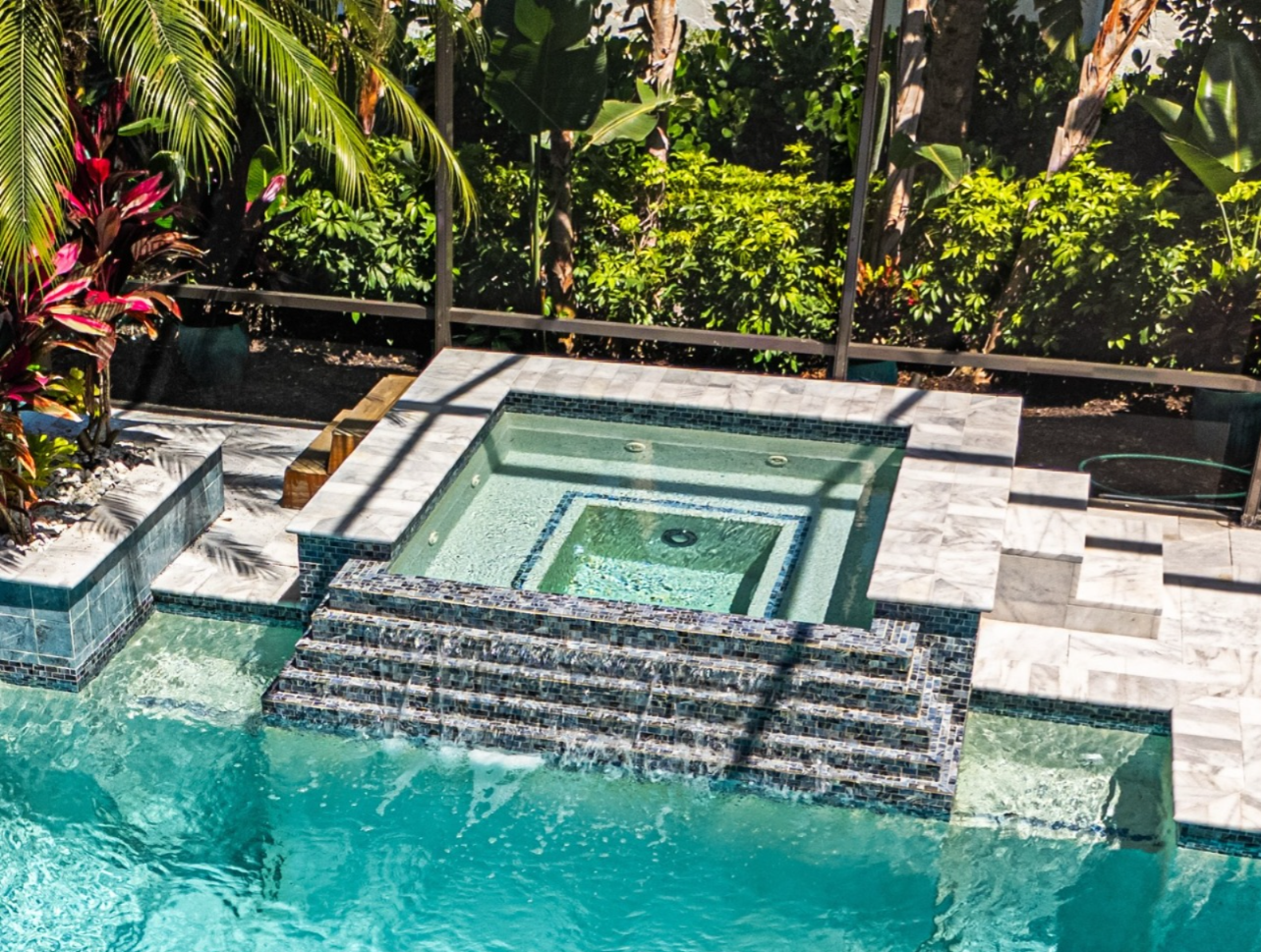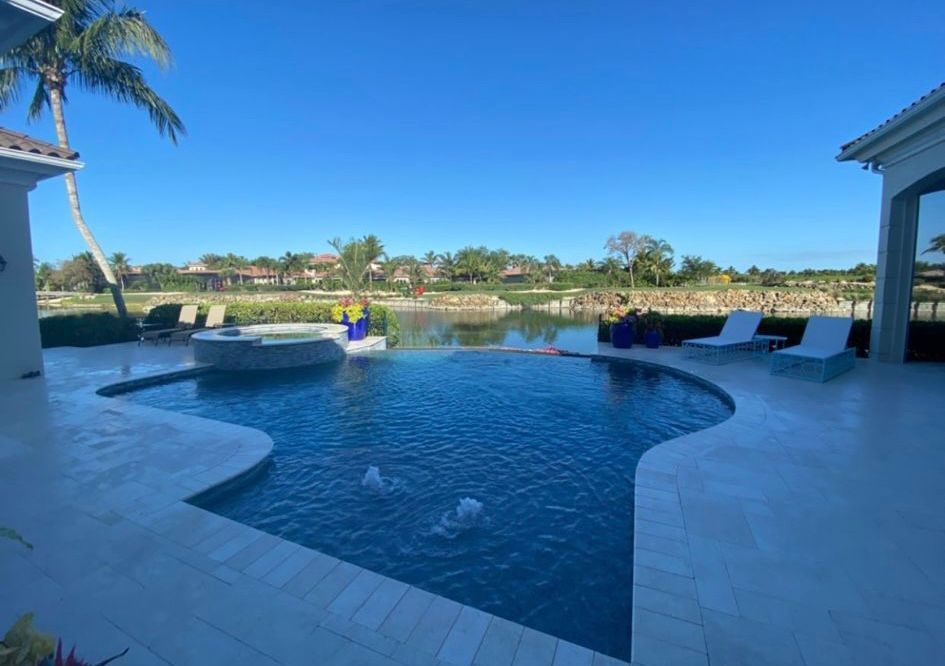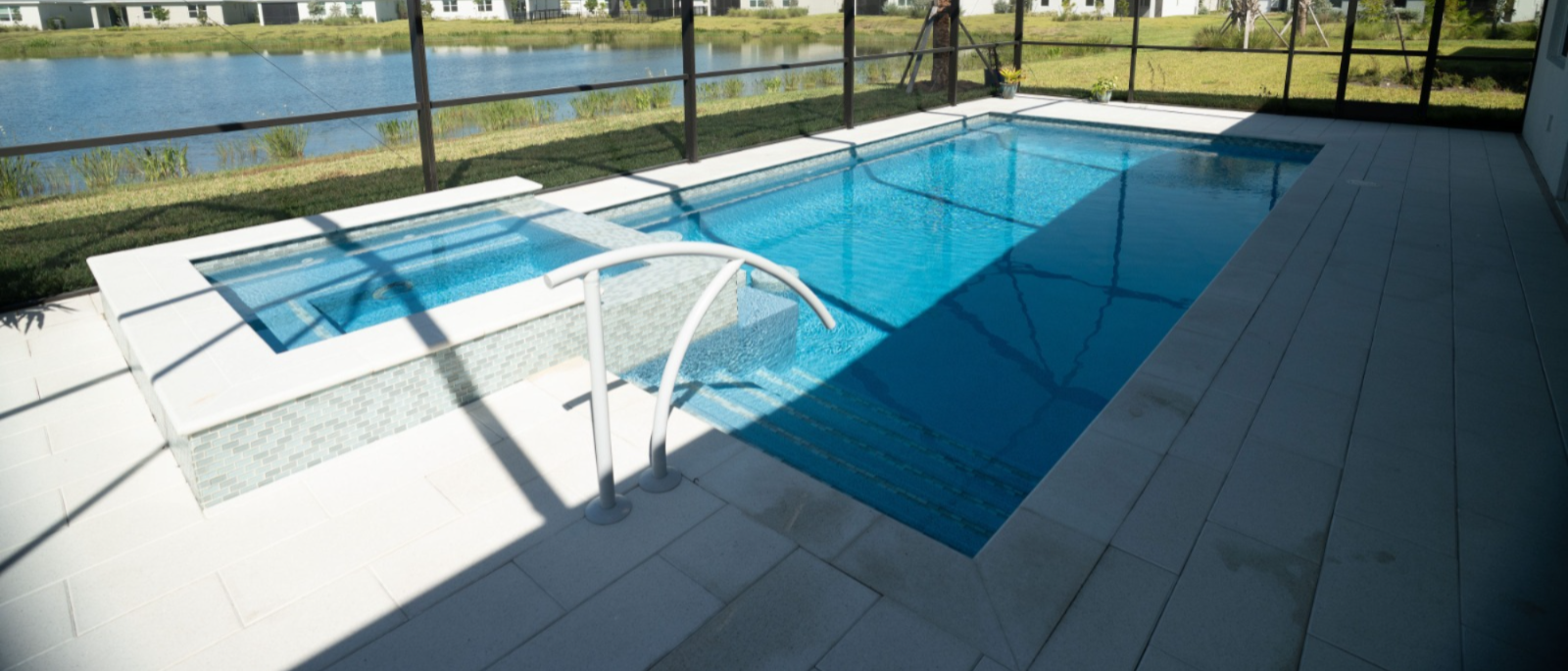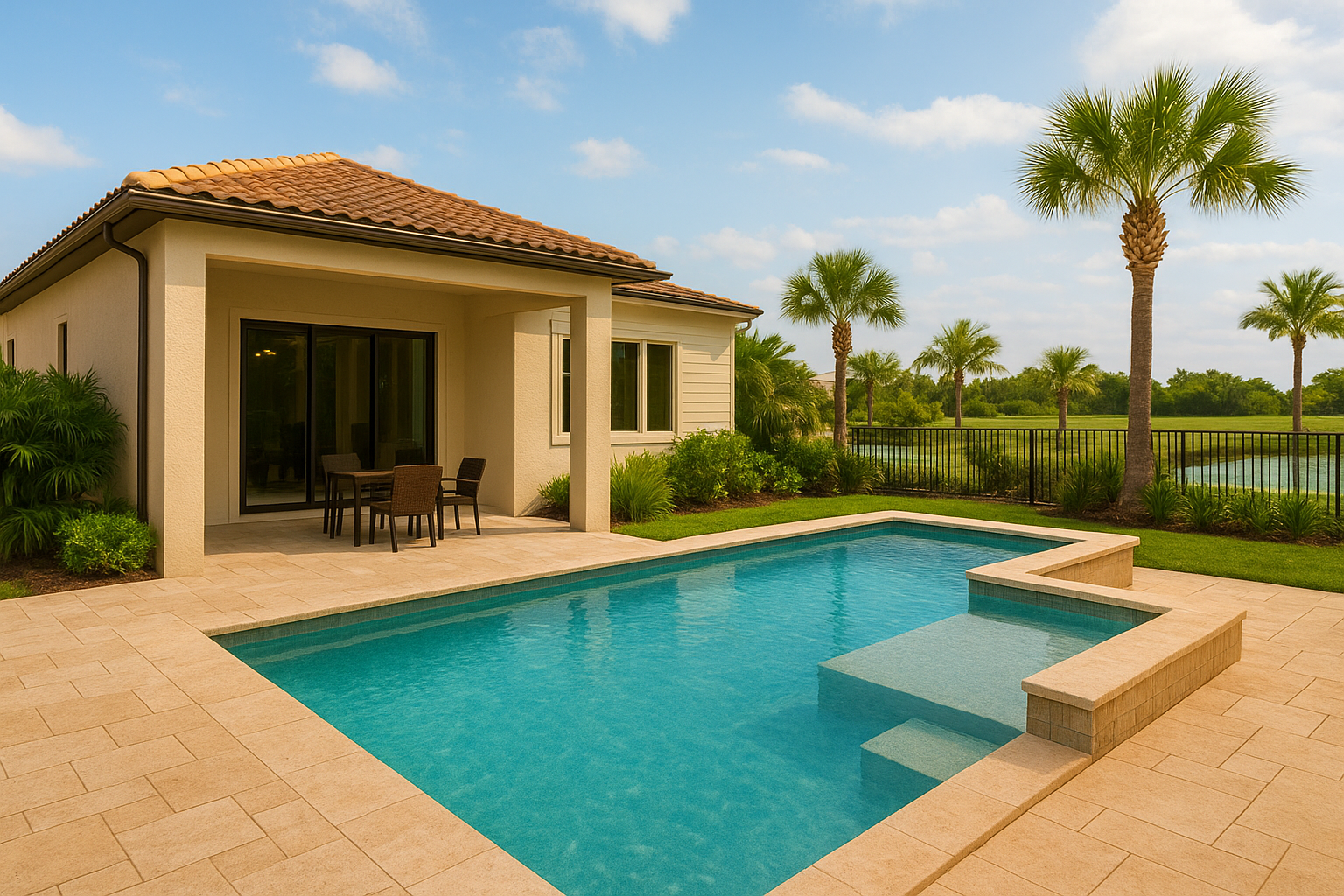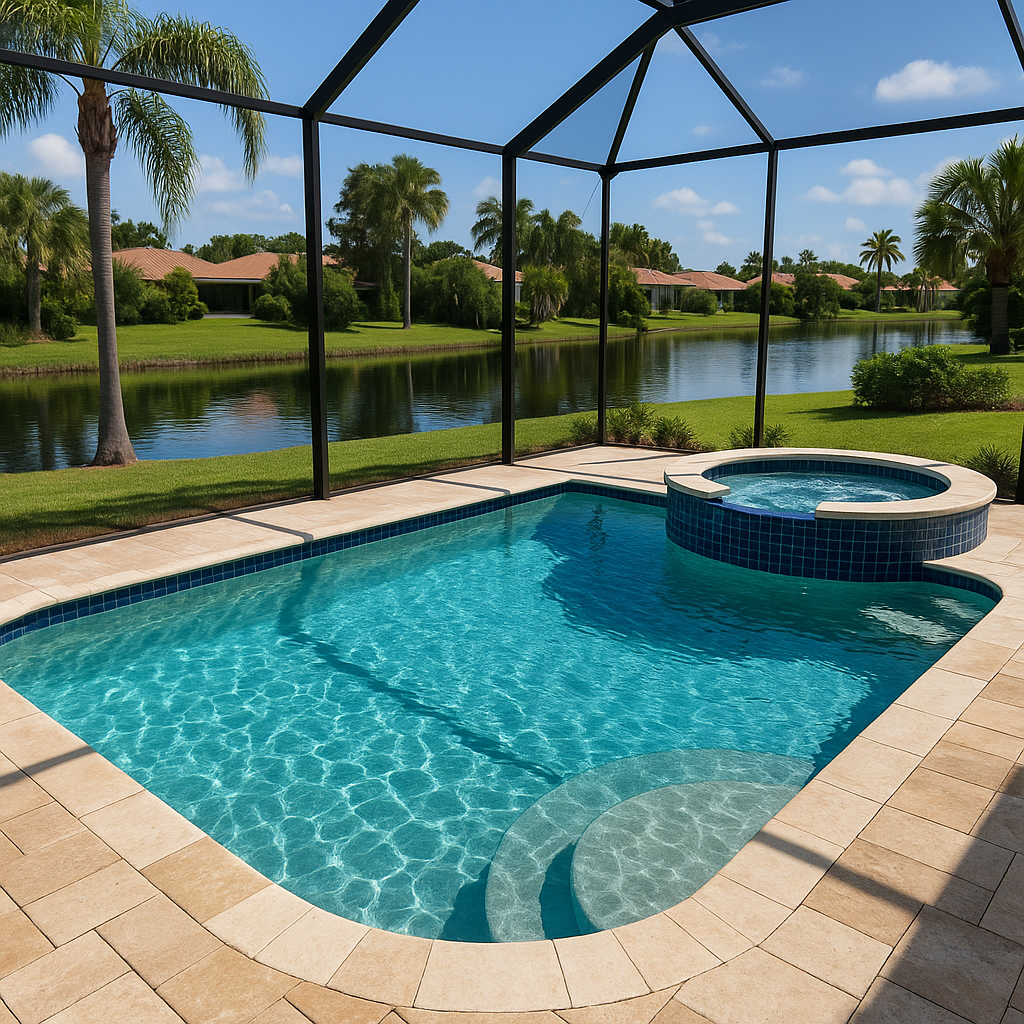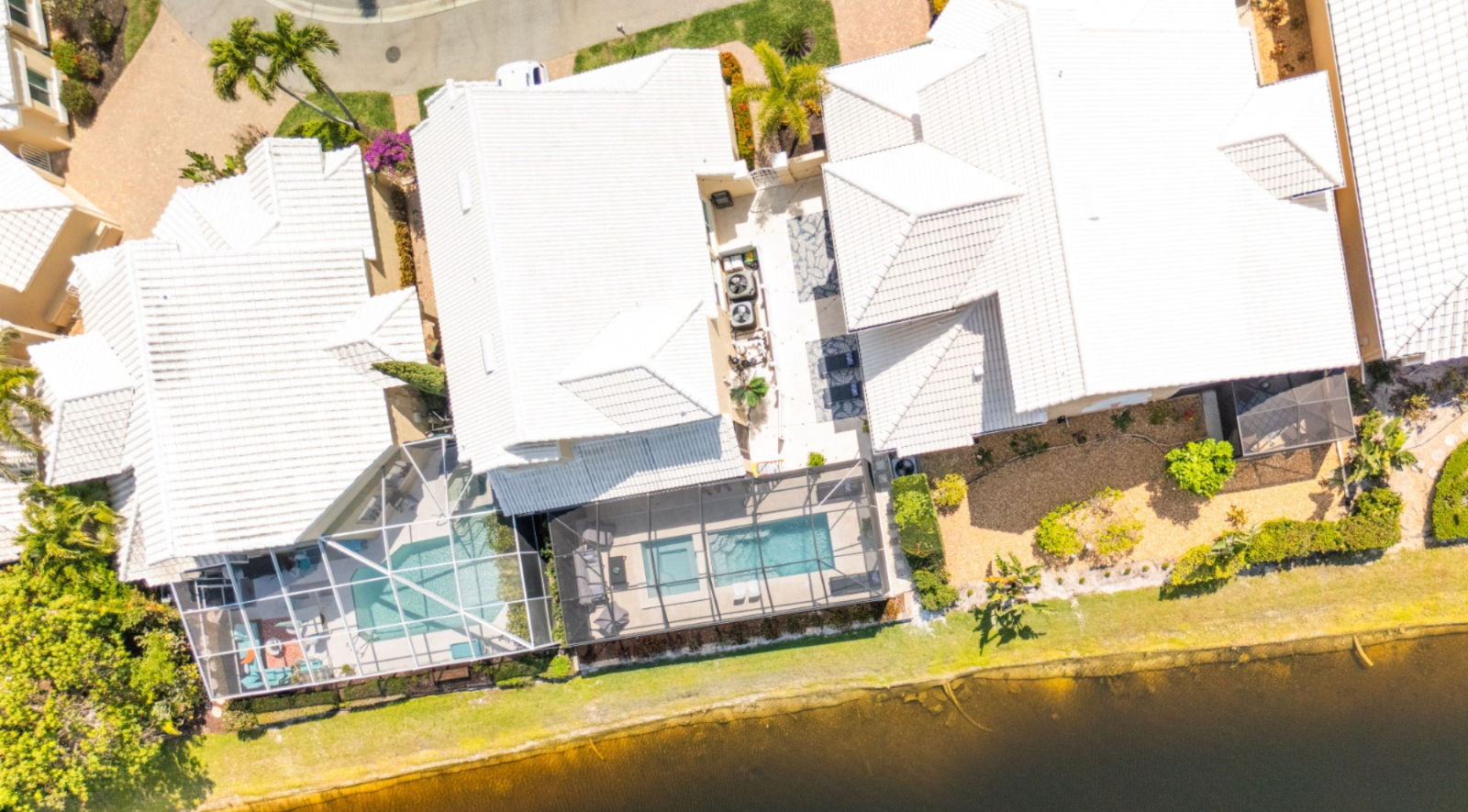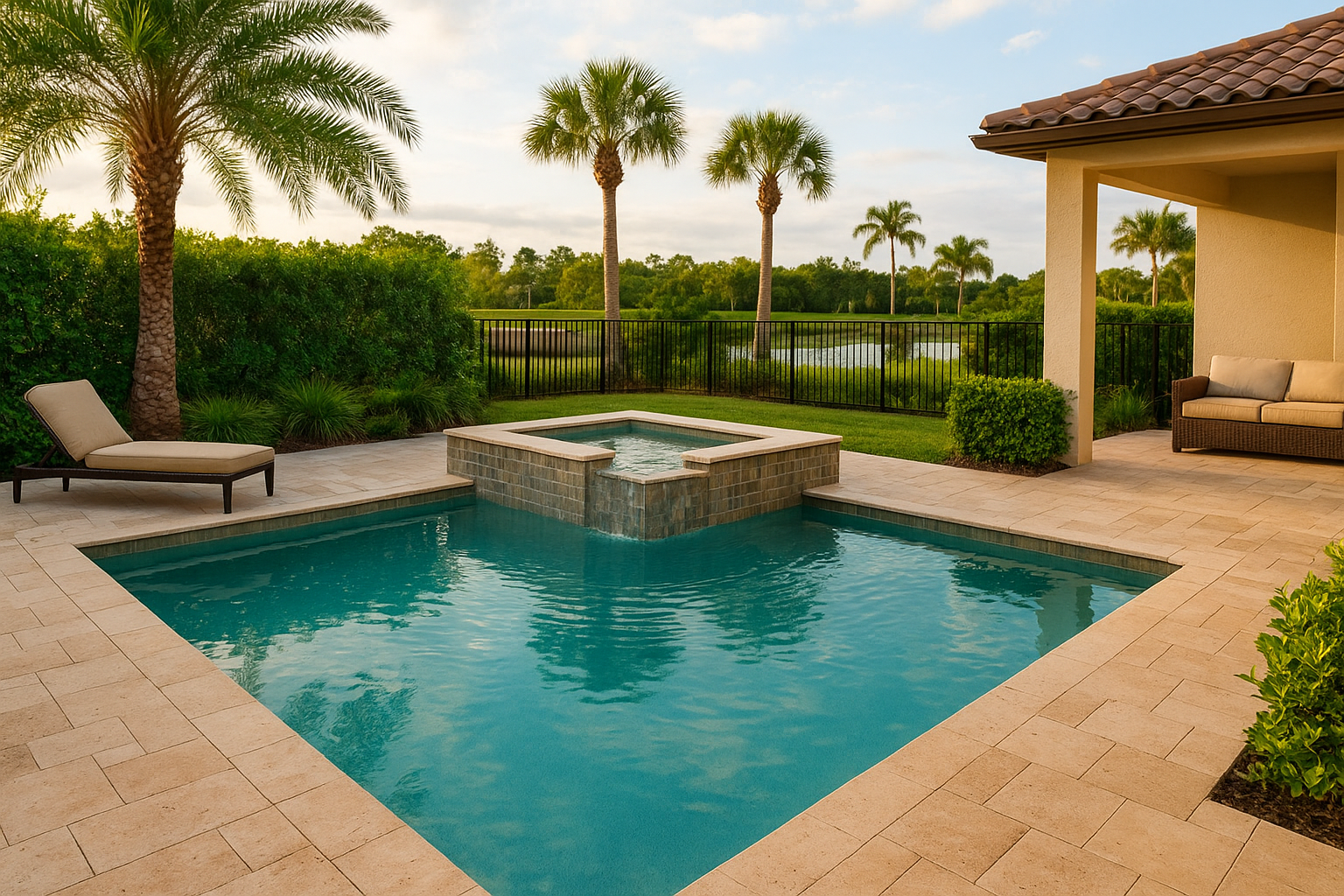How Florida’s Weather Affects Your Pool
Florida is one of the best places in the world to own a pool — but it’s also one of the most challenging. The same warm, tropical climate that makes pool season last all year also exposes your pool to intense sun, heavy rainfall, humidity, hurricanes, and rapid temperature changes. Understanding how Florida’s weather impacts your pool helps you protect your investment, prevent costly repairs, and keep your water crystal clear.
Here’s how weather affects your pool and what you can do to stay ahead of it.
Intense UV Rays Damage Surfaces and Break Down Chemicals
Florida’s sun is strong enough to affect both water balance and pool surfaces.
UV rays burn off chlorine faster than in many other climates. Surface materials like plaster, pebble finishes, and tile can fade, weaken, or degrade over time. Heat increases evaporation, causing water levels (and chemicals) to fluctuate more dramatically.
How to prevent damage:
- Use UV-stable or stabilized chlorine products that resist sunlight degradation.
- Keep cyanuric acid (CYA) levels in check — ideally around 30-50 ppm.
- Maintain consistent water levels during dry spells.
- Consider lighter interior finishes to reduce heat absorption.
Cost to mitigate:
Stabilized chlorine and specialty chemicals: Approximately $80-$150 per month for typical residential pool maintenance
Heavy Rain Dilutes Chemicals and Introduces Contaminants
During Florida’s rainy season (especially June–September), your pool often takes on more than water — including debris, dirt, and chemical imbalance.
What rain does to your pool:
- Dilutes chlorine, alkalinity, and calcium hardness.
- Introduces organic contaminants like pollen, fertilizer, or mud.
- Increases the risk of algae blooms and leads to cloudy water.
- Causes potential overflow that can damage decking or surrounding landscaping.
How to stay ahead:
- Test water immediately after significant storms.
- Use “shock treatments” more frequently during and after rain events.
- Run your filtration system for 10-12 hours a day during peak rainy periods.
- Ensure your deck drainage is effective to prevent dirty runoff entering your pool.
Cost to mitigate:
After-storm shock treatment: Around $40-$100 depending on chemical brand and pool size.
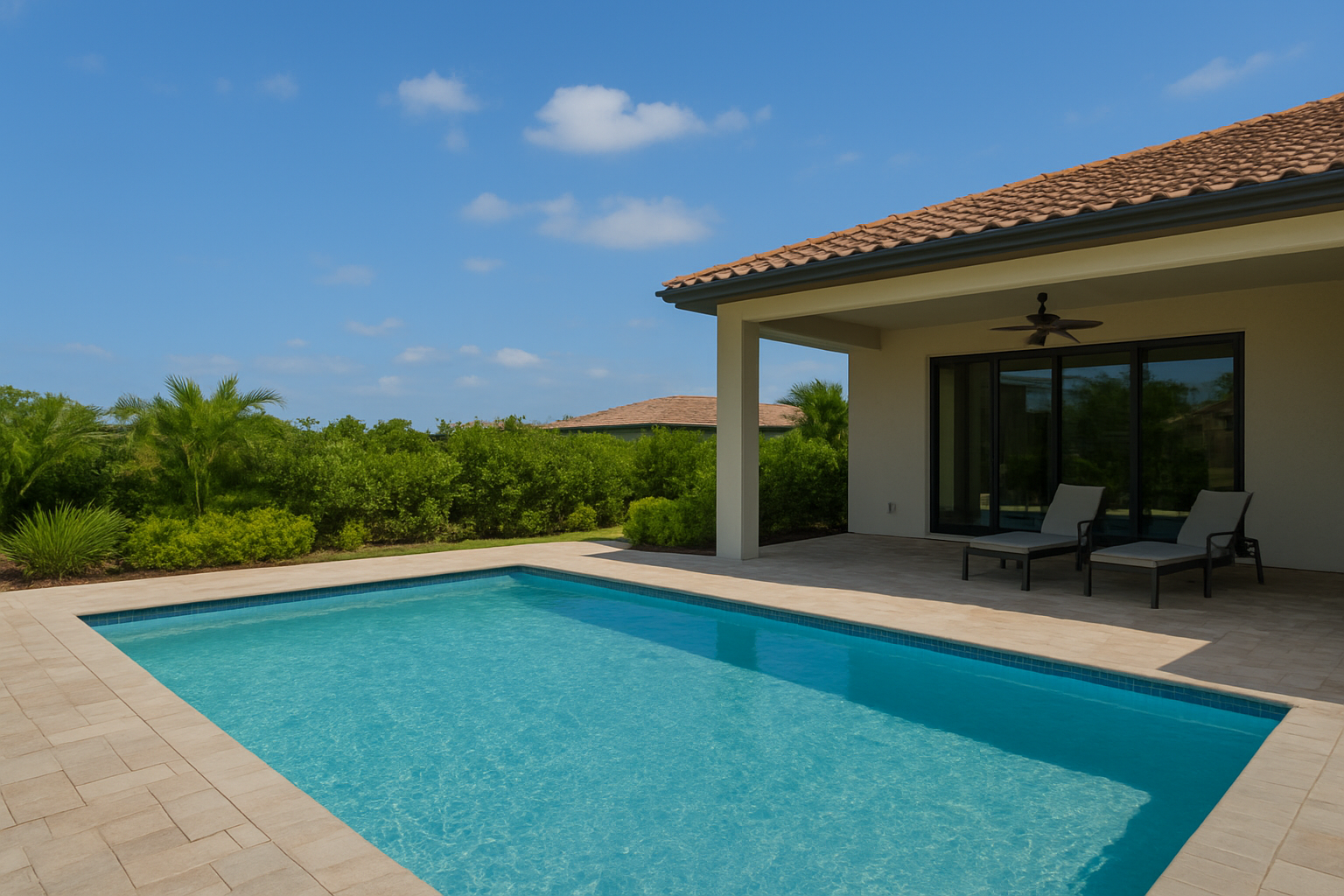
High Humidity Accelerates Algae Growth
High humidity creates ideal conditions for rapid algae growth, as warm, moist air supports faster reproduction. Frequent rainfall also disrupts key chemical levels—such as chlorine, bromine, and algaecide—reducing their effectiveness. And when water circulation is poor, creating “dead zones” in the pool, those areas become even more vulnerable to algae buildup, making overall maintenance more challenging.
Prevention tips:
- Maintain phosphate levels under 100 parts per billion (ppb) to limit algae fuel.
- Use an algaecide or tone-specific algaecides monthly during high-risk periods.
- Brush surfaces weekly and maintain strong circulation, especially in shallow corners or behind step walls.
Cost to mitigate:
Monthly algaecide during humid months: Approximately $15-$40 (depending on brand and dosage). Phosphate stabilizer or sequestrant (if needed): $60-$150 per treatment, depending on product and pool size.
Storms and Hurricanes Cause Structural Stress
Storms pose several risks to your pool, including flying debris that can damage tiles, coping, and screen enclosures, as well as flooding that washes sediment, leaves, and even fertilizer into the water. Heavy pressure changes during severe weather can also strain plumbing lines and equipment pads. Additionally, power outages halt your filtration and circulation systems, allowing contaminants to settle and water quality to deteriorate quickly.
Storm preparation steps:
- Lower your water level by 6–12 inches before a predicted storm surge.
- Secure all loose poolside furniture and equipment.
- Turn off power to your pump and heater safely.
- Do not fully cover your pool — debris can damage covers or tear them.
Post-storm recovery:
- Shock the pool as soon as possible.
- Run filtration continuously for at least 24 hours.
- Perform a visual inspection for cracks, leaks, or damage.
Temperature Swings Strain Decks and Heaters
Temperature fluctuations can significantly impact your pool by causing concrete decks to expand and contract, which may lead to surface cracks over time. When temperatures drop—especially in winter or early spring—pool heaters are forced to work harder to maintain comfort, increasing energy use and wear on the system. Cold weather can also cause pipes and plumbing lines to contract, putting stress on fittings and potentially leading to leaks or equipment strain.
Smart preventative actions:
- Use flexible decking materials like travertine or pavers that better handle temperature changes.
- Regularly service your heater and plumbing before seasonal swings.
- Consider freeze-protection or insulation if you’re in areas that occasionally go under 55°F.
How to Protect Your Pool Year-Round in Florida
To guard against weather-related damage and keep your pool healthy:
- Test your water weekly, more frequently during high-risk months.
- Run your filtration system longer during rainy or summer periods.
- Brush your pool regularly, especially after storms.
- Trim surrounding vegetation to reduce debris.
- Schedule a CPO-certified pool professional for inspections at least twice a year.
These preventive steps help maintain water clarity, protect your finishes, and prevent major repair bills down the line.
Trust Gold Standard Pools for Florida-Ready Design
At Gold Standard Pools, we build and maintain pools specifically for Florida’s climate. That means equipment selection, plumbing design, and feature placement are all optimized for UV exposure, storm resilience, and humidity control — so your pool stays strong, safe, and stunning year-round.
Contact us today to schedule a pool health assessment or design consultation — and make sure your investment is protected no matter what the Florida weather brings.


